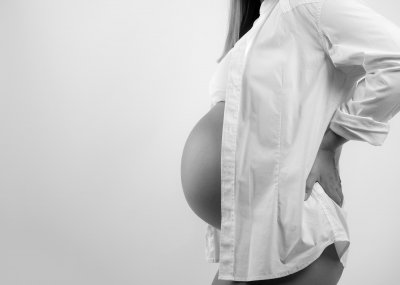 Poland is a country with limited iodine deficiency. Doctors warn, lack of iodine in food can lead to serious diseases.
Poland is a country with limited iodine deficiency. Doctors warn, lack of iodine in food can lead to serious diseases.
Where iodine accumulates in the body
 Iodine deficiency, above all, causes problems with the thyroid gland, but not only. In the human body 60% of iodine is contained in the gland of the thyroid gland, the remaining amount supports the work of the ovaries, is also present in the blood and bones. Iodine has antibacterial, antiviral and antifungal properties. So iodine deficiency can also lead to reproductive problems, for example.
Iodine deficiency, above all, causes problems with the thyroid gland, but not only. In the human body 60% of iodine is contained in the gland of the thyroid gland, the remaining amount supports the work of the ovaries, is also present in the blood and bones. Iodine has antibacterial, antiviral and antifungal properties. So iodine deficiency can also lead to reproductive problems, for example.
The thyroid gland is responsible for proper metabolism and work of the human nervous system. When this element is missing, the thyroid gland hypertrophy, the formation of the so-called endemic will.
What leads to iodine deficiency

Endemic goitre is not only a defect in beauty (hypertrophy of the thyroid gland leads to neck deformation), it can also cause problems with breathing and swallowing food, as well as lead to cancer.
The lack of iodine in the body is associated with hypothyroidism. This means that the body slows down the processes taking place in it. As a result, a person is mentally dumb, indifference to the environment occurs. External signs of hypothyroidism are snoring and low voice, swelling of eyelids, constipation, increased hair loss.
Individuals who have fertility problems are first referred to the thyroid hormone level test, as it has a significant impact on the possibility of becoming pregnant and reducing the risk of miscarriages.
Inactivity of the thyroid gland, unfortunately, may also affect the youngest. In children it can cause mental underdevelopment, such as mattress or cretinism. It is also the cause of the inhibition of growth.
What are the first symptoms of iodine deficit?
Iodine deficiency in the body is easy to detect. Fatigue progresses, memory problems appear, difficulty in associating facts, distraction. The bad mood is getting worse and the mood is moving towards apathy. In addition, people suffering from iodine deficiency feel cold and can also observe dry skin.
Iodine consumption standards
So what is the correct level of iodine in the human body? Demand for this element remains at a negligible level. However, even such minimum doses of iodine can have a beneficial effect on our health.
Demand:
 up to 6 months old - 40 micrograms
up to 6 months old - 40 micrograms- from 7 to 12 months old - 50 micrograms
- from 1 to 3 years old - 70 micrograms
- from 4 to 6 years old - 90 micrograms
- from 7 to 9 years old - 120 micrograms
- from 10 to 15 years old - 150 micrograms
- from 16 to 18 years of age - 160 micrograms (as adults).
- Pregnant women - 180 micrograms; breastfeeding mothers (200 micrograms).
Iodine sources in food
 The richest source of iodine is "originating" from the sea, i.e. fish (especially salmon, liver, flatfish, herring and cod), seafood and fish oil. It also contains purified, dried and powdered seaweed and plankton.
The richest source of iodine is "originating" from the sea, i.e. fish (especially salmon, liver, flatfish, herring and cod), seafood and fish oil. It also contains purified, dried and powdered seaweed and plankton.
From other food products, the most iodine contains: asparagus, beans, garlic, goat's milk, whey, kale, lettuce, oats, onions, spinach, strawberries, tomatoes, turnips, cress, melons. It is advisable to drink fruit and vegetable juices, from which the assimilability of ingredients is much higher than from products in their natural form. However, it should be remembered that the iodine content of these products depends on how rich the soil is in this element. In a nutshell, it can be said that products from coastal areas will be richer in iodine.
Products limiting the assimilability of iodine
People who suffer from iodine deficiency should take care to eliminate from the diet foods that limit the body's ability to assimilate this element. These products include cabbage, Brussels sprouts, cauliflower, cabbage, peaches, pears, spinach and turnip.
Promotion of a diet rich in iodine
In our country for almost 20 years there has been an obligation to iodise kitchen salt. Potassium iodide and potassium iodate are used for iodination. Of course, salt iodination is only dietary supportive because the daily dose of salt is limited to 1 teaspoon. People with hypertension problems should not consume it at all. Therefore, table salt iodination should not be considered as a sufficient action in the hypothyroidism prevention programme.

Drinking water containing microelements is a good solution.
"Controlled" iodination has a disadvantage. It is not possible to determine regionally appropriate doses and although it is difficult to overdose iodine, it is possible. An overdose of iodine, on the other hand, may have similarly fatal consequences as its deficiency.
Symptoms of iodine overdose
Iodine poisoning can occur at 20 or 30 times the dose. So it is so difficult that it is almost impossible. Symptoms of excess iodine include a metallic aftertaste in the mouth, mouth ulcers, swelling of salivary glands, diarrhea, vomiting, headaches, rash and breathing problems. Eyesophagus, nervousness, swelling of the tongue and many other symptoms can occur when 30 times the norm is exceeded. Starting increased thyroxine production by the thyroid gland can lead to excessive excitement, anxiety and weight loss.















